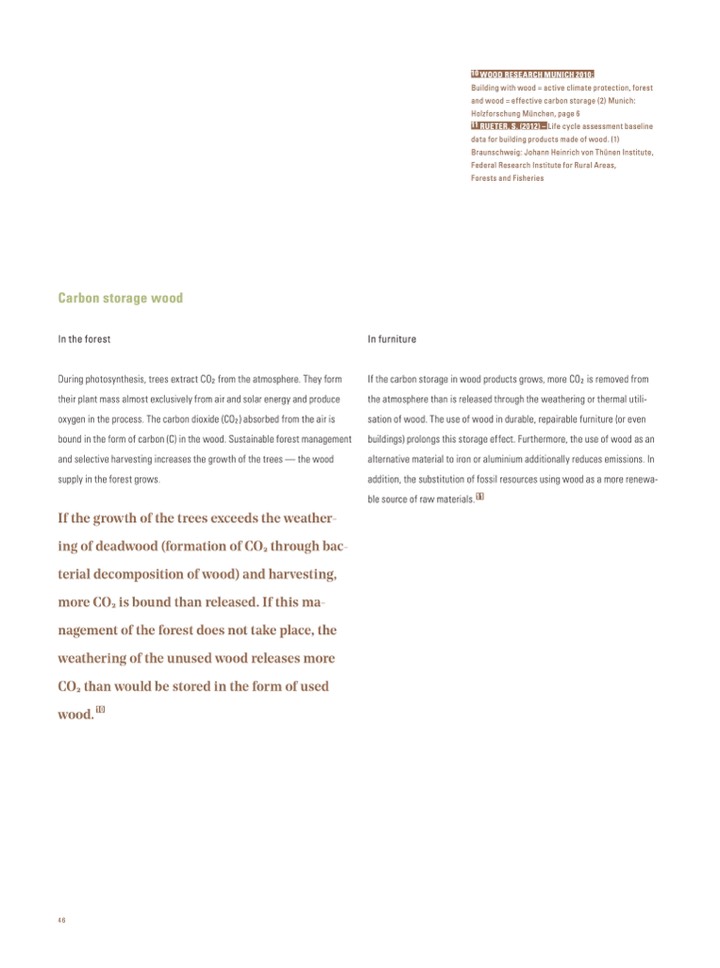
10 WOOD RESEARCH MUNICH 2010:
Building with wood = active climate protection, forest
and wood = effective carbon storage (2) Munich:
Holzforschung München, page 6
11 RUETER, S. (2012) – Life cycle assessment baseline
data for building products made of wood. (1)
Braunschweig: Johann Heinrich von Thünen Institute,
Federal Research Institute for Rural Areas,
Forests and Fisheries
Carbon storage wood
In the forest
During photosynthesis, trees extract CO
2
from the atmosphere. They form
their plant mass almost exclusively from air and solar energy and produce
oxygen in the process. The carbon dioxide (CO
2
) absorbed from the air is
bound in the form of carbon (C) in the wood. Sustainable forest management
and selective harvesting increases the growth of the trees — the wood
supply in the forest grows.
If the growth of the trees exceeds the weather-
ing of deadwood (formation of CO
2
through bac-
terial decomposition of wood) and harvesting,
more CO
2
is bound than released. If this ma-
nagement of the forest does not take place, the
weathering of the unused wood releases more
CO
2
than would be stored in the form of used
wood.
10
In furniture
If the carbon storage in wood products grows, more CO
2
is removed from
the atmosphere than is released through the weathering or thermal utili-
sation of wood. The use of wood in durable, repairable furniture (or even
buildings) prolongs this storage effect. Furthermore, the use of wood as an
alternative material to iron or aluminium additionally reduces emissions. In
addition, the substitution of fossil resources using wood as a more renewa-
ble source of raw materials. 11
46

